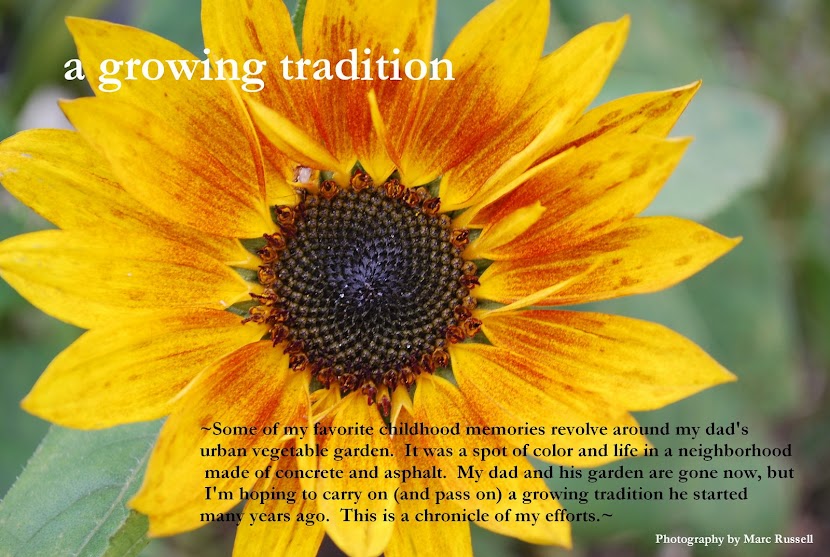For the side beds, I began by marking the boundaries with kitchen twine. Then came the hard part - overturning and breaking up the soil, which thankfully was grass and weed free for the most part. As I inspected the soil, I was glad to find a lot of earthworms. I've very impressed by the soil we have here in our yard - dark, crumbly and fresh smelling. However, I did end up finding quite a few large rocks and roots in this part of the garden. As a result, it took me much longer to prepare these beds compared to the ones I had done before.
Next I dug a slight trench along the border and laid down some tree trunks that we had lying around the yard. The prior owners had left them behind and since they are pine, are unsuitable for burning in our fireplace. I like being able to find a use for them. After the border was done, I removed as much grass and weeds as I could from the paths, leveled the surface with a garden rake, and then put down some cardboard to kill any remaining grass. Finally, I put a layer of straw on top of the cardboard for aesthetics.
Overall, I'm pretty happy with the results! What do you think?

Thomas, I think it looks great. There's nothing like cleaning the garden spot up, then looking at your accomplishment.
ReplyDeleteI think it looks beautiful! What a good idea to use the pine logs. We just disposed of several large branches, and I didn't even think about using them in the garden :-)
ReplyDeleteI'm anxious to see what you plant in your new garden space.
Very inviting garden. Good reuse of the pine logs.
ReplyDeleteLookin' good! You will have so much space, shall we place a wager on how many seed varieties you purchase when all those winter catalogs arrive? ;)
ReplyDeletePine won't last forever but it will look great for a year or two! But I'm sure that composting materials was part of your goal right? IE cardboard and straw? Anyway everyone is right, it looks fabulous.
ReplyDeletesteve
this looks beautiful! and i envy your nice crumbly brown loam...here in Virginia, even after years of amending the soil, it's still mostly red clay.
ReplyDelete